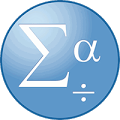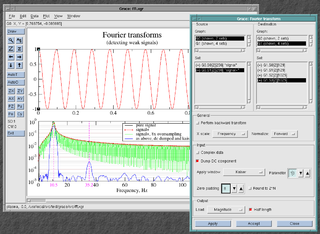
The graphical user interface is a form of user interface that allows users to interact with electronic devices through graphical icons and audio indicator such as primary notation, instead of text-based user interfaces, typed command labels or text navigation. GUIs were introduced in reaction to the perceived steep learning curve of command-line interfaces (CLIs), which require commands to be typed on a computer keyboard.

Microsoft Windows, commonly referred to as Windows, is a group of several graphical operating system families, all of which are developed, marketed and sold by Microsoft. Each family caters to a certain sector of the computing industry. Active Microsoft Windows families include Windows NT and Windows IoT; these may encompass subfamilies, e.g. Windows Server or Windows Embedded Compact. Defunct Microsoft Windows families include Windows 9x, Windows Mobile and Windows Phone.

Microsoft Excel is a spreadsheet developed by Microsoft for Windows, macOS, Android and iOS. It features calculation, graphing tools, pivot tables, and a macro programming language called Visual Basic for Applications. It has been a very widely applied spreadsheet for these platforms, especially since version 5 in 1993, and it has replaced Lotus 1-2-3 as the industry standard for spreadsheets. Excel forms part of the Microsoft Office suite of software.
VBScript is an Active Scripting language developed by Microsoft that is modeled on Visual Basic. It allows Microsoft Windows system administrators to generate powerful tools for managing computers with error handling, subroutines, and other advanced programming constructs. It can give the user complete control over many aspects of their computing environment.

SPSS Statistics is a software package used for interactive, or batched, statistical analysis. Long produced by SPSS Inc., it was acquired by IBM in 2009. The current versions (2015) are named IBM SPSS Statistics.

Windows-1252 or CP-1252 is a single-byte character encoding of the Latin alphabet, used by default in the legacy components of Microsoft Windows for English and some other Western languages.

x86-64 is the 64-bit version of the x86 instruction set. It introduces two new modes of operation, 64-bit mode and compatibility mode, along with a new 4-level paging mode. With 64-bit mode and the new paging mode, it supports vastly larger amounts of virtual memory and physical memory than is possible on its 32-bit predecessors, allowing programs to store larger amounts of data in memory. x86-64 also expands general-purpose registers to 64-bit, as well extends the number of them from 8 to 16, and provides numerous other enhancements. Floating point operations are supported via mandatory SSE2-like instructions, and x87/MMX style registers are generally not used ; instead, a set of 32 vector registers, 128 bits each, is used. In 64-bit mode, instructions are modified to support 64-bit operands and 64-bit addressing mode. The compatibility mode allows 16- and 32-bit user applications to run unmodified coexisting with 64-bit applications if the 64-bit operating system supports them. As the full x86 16-bit and 32-bit instruction sets remain implemented in hardware without any intervening emulation, these older executables can run with little or no performance penalty, while newer or modified applications can take advantage of new features of the processor design to achieve performance improvements. Also, a processor supporting x86-64 still powers on in real mode for full backward compatibility, as x86 processors have done since the 80286.

Microsoft Works was a productivity software suite developed by Microsoft, sold from 1987 to 2009. Its core functionality included a word processor, a spreadsheet and a database management system. Later versions had a calendar application and a dictionary while older releases included a terminal emulator. Works was available as a standalone program, and as part of a namesake home productivity suite. Because of its low cost, companies frequently pre-installed Works on their low-cost machines. Works was smaller, less expensive, and had fewer features than Microsoft Office and other major office suites available at the time.

ESET NOD32 Antivirus, commonly known as NOD32, is an antivirus software package made by the Slovak company ESET. ESET NOD32 Antivirus is sold in two editions, Home Edition and Business Edition. The Business Edition packages add ESET Remote Administrator allowing for server deployment and management, mirroring of threat signature database updates and the ability to install on Microsoft Windows Server operating systems.

Grace is a free WYSIWYG 2D graph plotting tool, for Unix-like operating systems. The package name stands for "GRaphing, Advanced Computation and Exploration of data." Grace uses the X Window System and Motif for its GUI. It has been ported to VMS, OS/2, and Windows 9*/NT/2000/XP. In 1996, Linux Journal described Xmgr as one of the two most prominent graphing packages for Linux.
Microsoft Defender is an anti-malware component of Microsoft Windows. It was first released as a downloadable free antispyware program for Windows XP, and was later shipped with Windows Vista and Windows 7. It has evolved into a full antivirus program, replacing Microsoft Security Essentials as part of Windows 8 and later versions.

Canvas X is a drawing, imaging, and publishing computer program from Canvas GFX for personal computers.
Orbit@home was a BOINC-based distributed computing project of the Planetary Science Institute. It uses the "Orbit Reconstruction, Simulation and Analysis" framework to optimize the search strategies that are used to find near-Earth objects.
EViews is a statistical package for Windows, used mainly for time-series oriented econometric analysis. It is developed by Quantitative Micro Software (QMS), now a part of IHS. Version 1.0 was released in March 1994, and replaced MicroTSP. The TSP software and programming language had been originally developed by Robert Hall in 1965. The current version of EViews is 11, released in April 2019.
FxCop is a free static code analysis tool from Microsoft that checks .NET managed code assemblies for conformance to Microsoft's .NET Framework Design Guidelines. Unlike StyleCop, or the Lint programming tool, for the C programming language, FxCop analyzes the compiled object code, not the original source code. It uses CIL parsing and callgraph analysis to inspect assemblies for more than 200 different possible coding standards violations in the following areas:

Home Page Reader (Hpr) was a computer program, a self-voicing web browser designed for people who are blind. It was developed by IBM from the work of Chieko Asakawa at IBM Japan.

Epi Info is statistical software for epidemiology developed by Centers for Disease Control and Prevention (CDC) in Atlanta, Georgia (US).

MapWindow GIS is an open-source GIS (mapping) application and set of programmable mapping components. It has been adopted by the United States Environmental Protection Agency as the primary GIS platform for its BASINS watershed analysis and modeling software.

UTEXAS is a slope stability analysis program written by Stephen G. Wright of the University of Texas at Austin. The program is used in the field of civil engineering to analyze levees, earth dams, natural slopes, and anywhere there is concern for mass wasting. UTEXAS finds the factor of safety for the slope and the critical failure surface. Recently the software was used to help determine the reasons behind the failure of I-walls during Hurricane Katrina.

Disk Clean-up (cleanmgr.exe) is a computer maintenance utility included in Microsoft Windows designed to free up disk space on a computer's hard drive. The utility first searches and analyzes the hard drive for files that are no longer of any use, and then removes the unnecessary files. There are a number of different file categories that Disk Clean-up targets when performing the initial disk analysis:













